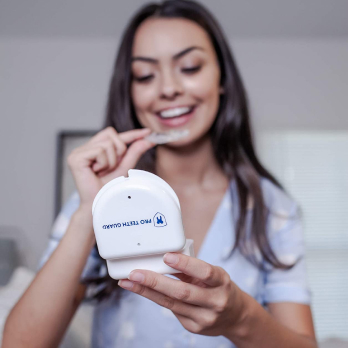Types Of Retainers For Teeth
4th Jul 2020
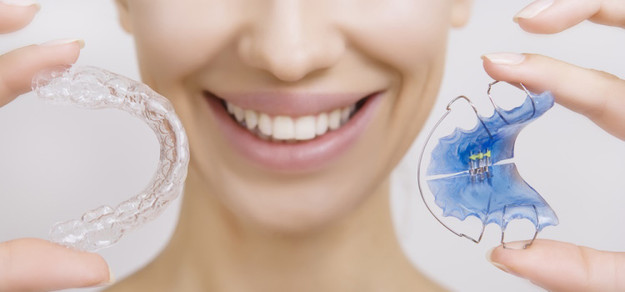
There are several types of retainers for teeth. If you're finished with your orthodontic treatment or soon will be, it's wise to take a little time to explore your options to find the right type of teeth retainer. This is particularly important if you suffer from bruxism. Balancing orthodontic and bruxism treatments can be difficult.
However, understanding your options and their potential impacts on your new smile, your teeth grinding, and your oral hygiene routine makes it easier to have a productive conversation with your orthodontist about your new retainer.
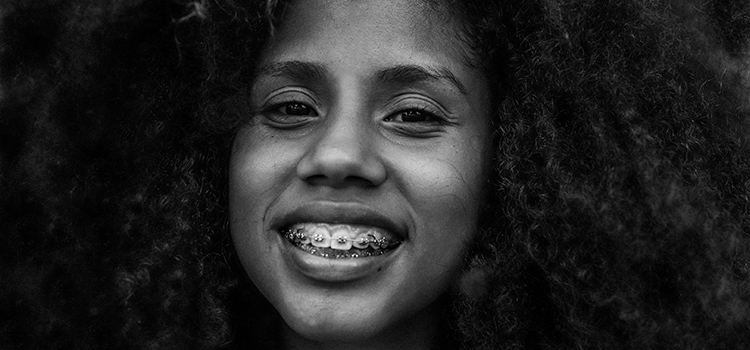
The Reason For Retainers
Orthodontists use braces, aligners, and other orthodontic treatments to shift teeth into the desired position. These efforts can lead to a better smile and a healthier bite, but the results need ongoing support. Wearing retainers after orthodontic treatment prevents your teeth from shifting back to their previous positions while the surrounding bone and tissues adjust to the changes.
The length and frequency of retainer use depend on the patient. Some people only need to wear them regularly for a few months. Some may need to wear them day and night at first, then only overnight. Others may just need to pop in their retainer periodically if they want to maintain the results they've achieved.
Your orthodontist can advise you about how often you should wear your retainer. They can also help you decide which retainer is right for you. There are several different types of retainers.
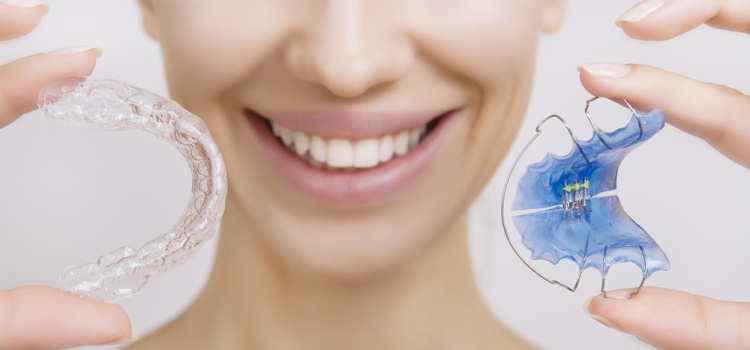
Types Of Teeth Retainers
Depending on your situation, your orthodontist may recommend one or two of these oral devices as part of your treatment plan. The different types of retainers can be sorted into two categories: removable and permanent. Retainers can also fit either the top or bottom teeth.
Removable Retainers
As their name implies, removable retainers can be removed by the user. That simplifies eating and maintaining your oral hygiene routine. However, it does increase the odds of misplacing your retainer or forgetting to use it properly. There are two basic types of removable retainers, and they each have pros and cons.
-
Clear Plastic Retainers:
If discretion is your priority, clear plastic retainers like those made by Essix and Invisalign are hard to beat. Also known as molded, thermoplastic, or vacuum-formed retainers, they're made from clear plastic or polyurethane. They're practically invisible and should fit you perfectly, as they’re made from a mold of your teeth. They're thin, comfortable, and tend to stay in place better than some of their peers. With a horseshoe shape that surrounds your upper or lower teeth, they also form a thin barrier between the teeth. This may offer a little protection against teeth grinding. However, their lifespan is only six to 12 months long, and repairs are rarely feasible.
-
Hawley Retainers:
Sometimes called wire retainers, this type of retainer features a thin metal wire that sits in front of the teeth. A piece of plastic or acrylic is molded to fit either the roof of the mouth or along the inside of the lower teeth to hold it in place. Hawley retainers allow the teeth to touch, can be adjusted, and are more durable. Unfortunately, the wire is visible where it crosses the front teeth, and it can irritate the cheek and gum tissue. Also, issues with impaired speech and excessive saliva are possible.
Permanent Retainers
Permanent retainers may not last forever, but they can only be removed by a dentist or orthodontist. They also go by several names, including fixed retainers, lingual retainers, and bonded retainers. Whatever term you choose, this type of retainer involves placing a solid or braided wire against the back of your front teeth. The wire is cemented or bonded into place.
Attaching the retainer to the teeth eliminates worries about noncompliance or losing the retainer. Because the wire sits behind the teeth, it's not readily visible, but its constant presence can irritate the tissues of the mouth. It can also interfere with brushing and flossing.
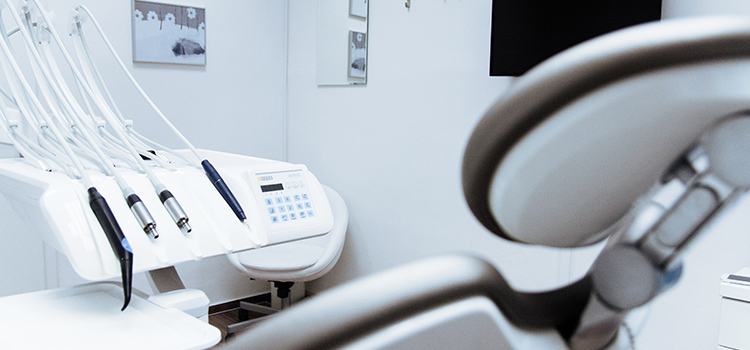
Retainers and Bruxism
The teeth grinding and jaw clenching that defines bruxism can make using a retainer challenging. Bruxism symptoms can wear a retainer down, so it’s not always the best option to wear the devices full-time.
Although retainers might resemble the night guards used to treat bruxism, the devices serve different purposes. Neither permanent retainers nor Hawley retainers place a physical barrier between your teeth to prevent teeth grinding. Clear plastic retainers do place a thin layer of material between the teeth, but it's not designed for durability.
These retainers may help protect the surfaces of the teeth a little, but they won't work as well as wearing a night guard. Without a night guard, your retainer's lifespan will become shorter, as your teeth will grind through the plastic. However, night guards do not function as retainers, as they cannot fit tightly enough to prevent teeth from shifting.
Unfortunately, it's often impossible to wear both a night guard and a retainer at the same time. While it's important to review your specific situation with your orthodontist, many patients find their best bet is to wear their retainers during the day and use a custom-fit night guard at night. Your dentist may also recommend alternating nights of wearing night guards with nights of wearing retainers.
It's worth noting that wearing your retainer as directed may also help you in your battle against bruxism. While multiple factors contribute to the development of bruxism, issues with your bite can be part of the problem. Correcting your bite with orthodontic treatments and maintaining that fix with retainers may relieve some of your bruxism symptom symptoms.
Related Articles:
- Benefits Of A Night Guard
- Weighted Blanket For Teeth Grinding
- Teeth Hurt After Wearing A Night Guard
- Flat Plane Occlusal Guard
Which Retainer Is the Best Choice?
The best retainer is the one that suits the patient's needs. If noncompliance is a problem or a long-term solution is required, an orthodontist may recommend a permanent retainer. However, if a patient craves convenience or flexibility, a removable retainer may be a better choice.
In some cases, a combination of retainers is just what the dentist ordered. A permanent retainer can hold the lower teeth in place. Meanwhile, a removable retainer can offer a discrete solution for the upper front teeth.
Retainer-Friendly Oral Hygiene
Like your teeth, retainers can harbor a wide range of germs, bacteria, and debris if they aren't properly cleaned. This means a good oral hygiene routine is vital. The type of retainer that you have will determine your best approach:
-
Removable Retainers:
Because clear plastic and Hawley retainers can be taken out of your mouth, your cleaning routine is fairly simple. Remove the retainer to brush and floss normally. To clean the retainer, rinse the device with lukewarm water after every meal.
Then, once a day, use a soft toothbrush or denture brush to gently scrub the retainer's surfaces. You can use diluted dish soap as a cleanser rather than toothpaste, which is too abrasive. However, if you use dish soap, do not clean it with the toothbrush you use to brush your teeth, and take care to thoroughly rinse the retainer afterward. Alternately, you might consider soaking your retainer in a denture or retainer cleaner.
-
Permanent Retainers:
Cleaning both your teeth and your retainer is more challenging with permanent retainers. Start by brushing all your teeth with a soft-bristled brush and toothpaste twice a day. Take extra care near the retainer.
Also, floss at least once a day. To floss around the retainer, use a threader to get the floss under the wire. Then, gently tug the floss back and forth to clean both the tooth and the retainer wire. Unfortunately, plaque and tartar may still build up in this area, which can increase your risk of gum disease. Talk to your dentist or orthodontist if you have concerns about your oral hygiene routine.

Retainer Care
Keeping your retainer clean is important, but there’s more you can do to keep your retainer in good shape. To that end, retainer users should also take the following steps:
- Clean your retainer case to keep it tidy and germ-free.
- Be mindful of where you put your retainer. Misplaced retainers are often accidentally damaged or thrown away.
- Avoid exposing your retainer to heat. For example, heat from boiling water, dishwashers, or even steamy car interiors can warp your retainer.
- Limit contact with chemicals. Many common chemicals can harm plastics or corrode metal.
- Replace your retainer as needed.
Ultimately, the best retainer is the one that fits your lifestyle while providing the support that your teeth need after orthodontic treatment. For some, this might require a permanent retainer. Others might do better with removable retainers or even a combination of removable and permanent devices.
Related Articles:
Discuss your options with your orthodontist to help make a confident decision about your retainer choices and your oral health. This is especially important if you also have bruxism. Working with your orthodontist allows you to make informed choices so you can protect your smile.
If your orthodontist suggests using a custom-fit night guard to manage your bruxism, consider Pro Teeth Guard. Our products are crafted in a professional dental lab and backed by a 110% money-back guarantee. You'll get a comfortable, custom-fit night guard at an affordable price.

- Most Popular
- Hard Outside, Soft Inside
- 2MM Thick
- Moderate / Heavy
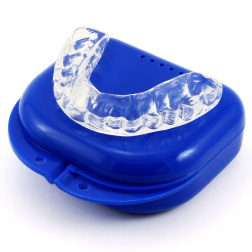
- Most Durable
- Hard Materials
- 1.5MM Thick
- Heavy / Severe
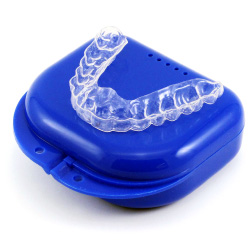
- For Day Time Use
- Thin, Barely Visible
- 1MM Thick
- Light / Moderate
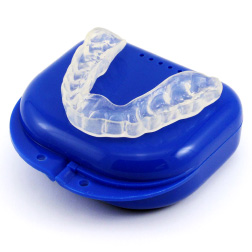
- For Clenching
- Flexible & Soft
- 1.5MM Thick
- Light / Moderate

